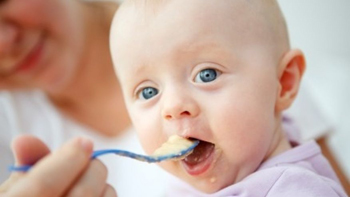Boston, Jan 1: Parents, take note! Infant cereals sold in lower-income countries may lack of consistency in nutritional content, researchers have warned after analysing over hundred commercially available premixed foods from around the world.
 The first global analysis of infant cereals sold in lower-income countries by researchers from Tufts University in the US highlights the need for basic quality assurance services to improve nutritional consistency and healthy growth of infants from six to 24 months of age.
The first global analysis of infant cereals sold in lower-income countries by researchers from Tufts University in the US highlights the need for basic quality assurance services to improve nutritional consistency and healthy growth of infants from six to 24 months of age.
For parents around the world, premixed infant cereals - also known as complementary foods - can be a vital source of the solid food needed for healthy child growth after six months of age, when infants outgrow the nutrients provided by breast milk alone.
"Premixed complementary foods can be extremely effective at protecting infants against malnutrition and stunted growth," said William Masters, professor at Tufts University.
"In countries where we sampled, some products can readily meet children's needs, but others fall far below requirements for both macro- and micronutrients," said Masters.
"Our results are a call to action for establishing and enforcing nutritional quality standards, which would help ensure access to lower-cost, higher-quality products and enable parents to meet their infants' needs more easily," he said.
Childhood malnutrition is the main cause of stunted growth, a serious and irreversible condition that puts affected individuals at greater risk for illness and death throughout their lives.
According to the World Health Organisation (WHO), children with stunted growth can have delayed mental development and poor school performance, which in turn affects economic productivity at the national level.
Nearly half of all deaths in children under age five are related to undernutrition, which is particularly widespread in Africa and Asia, according to UNICEF.
With the assistance of collaborators around the world, researchers purchased and analysed samples of locally produced complementary foods over a six-month period in 2014, from 21 African and Asian countries and from Haiti.
All are defined as low- and middle-income countries by the World Bank.
Each product was blind-tested for nutritional content within a month of purchase by an independent commercial laboratory based in the US.
On average, products met basic calorie and protein benchmarks for complementary foods as published by the Food and Agriculture Organisation of the United Nations and the WHO.
However, only 15 per cent met benchmarks for fat content, and under 25 per cent met standards for iron and zinc - two essential nutrients not present in sufficient levels in breast milk for healthy infant growth after six months of age, the critical time point for introducing solid foods.





Comments
Add new comment